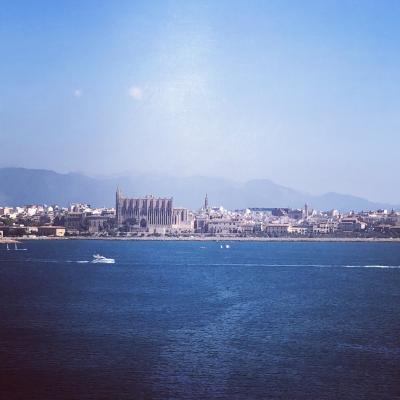What differences can travelers observe between Islamic architecture and later Christian adaptations in Mallorca?
Similar Topics
islamic architecture mallorca
christian adaptations mallorca
geometric decoration
horseshoe arches
romanesque and gothic
pointed arches
christian iconography
mosque transformations
Travelers exploring Mallorca can observe distinct differences between Islamic architecture and the later Christian adaptations that followed the island’s conquest. Islamic architecture in Mallorca, dating back to the period of Muslim rule from the 10th to the early 13th century, is characterized by its emphasis on geometric decoration, intricate tile work, and the purposeful use of courtyards and water features. Buildings from this era often display horseshoe arches, stucco ornamentation, and detailed calligraphic motifs, reflecting the rich artistic traditions of Al-Andalus. The structures usually favor horizontal lines and natural materials, creating spaces that blend harmoniously with the landscape and climate, designed to provide shade and cool retreat in the Mediterranean heat.
After the Christian reconquest in 1229, architectural styles in Mallorca began to incorporate Romanesque and Gothic elements, adapting and transforming Islamic influences rather than completely replacing them. Christian churches and palaces show pointed arches, ribbed vaults, and tall, narrow windows that emphasize verticality and light—features quite unlike the more grounded and enclosed nature of Islamic architecture. While some Islamic elements were preserved or repurposed, such as courtyard layouts and decorative tiles, these were often combined with Christian iconography and structural innovations like flying buttresses. Christian buildings tend to be more monumental in scale and geared towards symbolic representation of religious power, contrasting with the more private, intimate feel of Islamic residential architecture.
Visitors can also appreciate that Christian adaptations often introduced extensive figural sculpture and frescoes, which Islamic art largely avoided due to religious restrictions on depicting living beings. This creates a richer visual narrative centered on Christian doctrine and saints, contrasting with the abstract and vegetal patterns of Islamic design. The transformation of mosques into churches further illustrates these changes, where the original orientation, interior layout, and ornamentation were modified to suit Christian liturgy. Overall, travelers will notice a shift from the Islamic architecture’s refined intricacy and inward contemplation to the Christian style’s grandeur and outward expression of faith, offering a vivid architectural chronicle of Mallorca’s layered history.
After the Christian reconquest in 1229, architectural styles in Mallorca began to incorporate Romanesque and Gothic elements, adapting and transforming Islamic influences rather than completely replacing them. Christian churches and palaces show pointed arches, ribbed vaults, and tall, narrow windows that emphasize verticality and light—features quite unlike the more grounded and enclosed nature of Islamic architecture. While some Islamic elements were preserved or repurposed, such as courtyard layouts and decorative tiles, these were often combined with Christian iconography and structural innovations like flying buttresses. Christian buildings tend to be more monumental in scale and geared towards symbolic representation of religious power, contrasting with the more private, intimate feel of Islamic residential architecture.
Visitors can also appreciate that Christian adaptations often introduced extensive figural sculpture and frescoes, which Islamic art largely avoided due to religious restrictions on depicting living beings. This creates a richer visual narrative centered on Christian doctrine and saints, contrasting with the abstract and vegetal patterns of Islamic design. The transformation of mosques into churches further illustrates these changes, where the original orientation, interior layout, and ornamentation were modified to suit Christian liturgy. Overall, travelers will notice a shift from the Islamic architecture’s refined intricacy and inward contemplation to the Christian style’s grandeur and outward expression of faith, offering a vivid architectural chronicle of Mallorca’s layered history.
